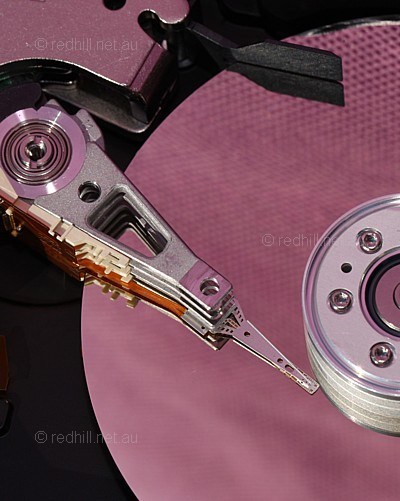
Quantum Fireball CR (4.3GB, 1999).
Update your bookmark
This is the old site. You probably want the new site.
The new site has all the same information but adds more drives, updated text, and much better pictures of many models.
- Seagate Medalist 13640
- Quantum Bigfoot TS new
- Quantum Fireball EX
- Seagate Medalist 17240
- Fujitsu MPC3064AT new
- IBM / WD 22GXP / Expert
- Quantum Fireball CR
- Seagate U4
- IBM Deskstar 25GP
- Quantum Fireball Plus KA new
- Quantum Fireball CX
- IBM / WD 34GXP / Expert 2
- Seagate Barracuda ATA
- Seagate U8
- Samsung SpinPoint V6800
- Western Digital 136BA
This old version of the Red Hill guide hasn't been updated for about ten years. The new version can be found here.
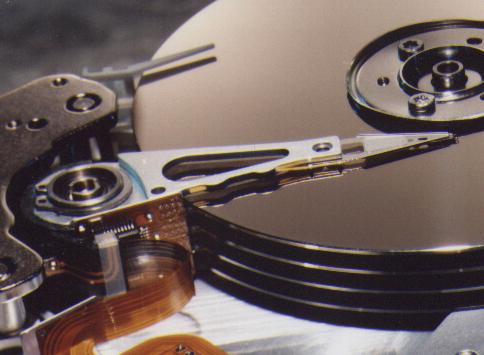
Seagate Medalist 13640 Family
Another classic entry-level Seagate drive; a bread and butter product to replace the old Medalist 4500 series and compete with the Quantum Bigfoot for the value end of the market, and the very last of the traditional Seagate entry-level drives before they switched to the less well-regarded U Series.
This low-end of the market is an all too often forgotten segment; many reviewers don't seem to realise that most people buy ordinary, everyday drives like these, let alone realise that the choice of drive is just as important in a $1000 family system as it is in a $4000 server — indeed, in some ways more so, as the differences between the very fastest drives, say a Cheetah, an Ultrastar ZX and an Atlas 10K, are often small, where the differences between entry level drives can be enormous.
Seagate have always been good at entry-level drives — together with the SCSI segment at the other end of the market this is their specialty — but with these outdid themselves. They were easily faster than any competing drive (compare to the Bigfoot TS below), and stood up well even when compared to more expensive mid-range drives like the Western Digital Caviar or Seagate's own Medalist 17240. By early 2000, they were no more than a solid entry-level performer, but when introduced they were quite outstanding.
Like most entry-level Seagate drives, they had a fairly long market life, and the traditional Seagate virtues of reliability and value for money. Indeed, the eventual Medalist 13640 replacement, the unlovely U4 Series, was a disappointment.
| Performance | 1.15 | Reliability | AA1 |
| Data rate | 172 Mbit/sec | Spin rate | 5400 RPM |
| Seek time | 9.5ms | Buffer | 512k |
| Platter capacity | 3.25GB | Interface | ATA-33/66 |
| ST-3210A | 3.25GB | 2 MR heads | * |
| ST-36422A | 6.40GB | 4 MR heads | **** |
| ST-38622A | 8.62GB | 5 MR heads | *** |
| ST-310230A | 10.2GB | 6 MR heads | ** |
| ST-313640A | 13.6GB | 8 MR heads | ** |
Quantum Bigfoot TS
Traditionally, Quantum's long-running range of 5.25 inch drives were fairly cheap but very slow: in the trade, they were known, not unfairly, as the "Slugfoot". We never liked them much and never sold them new. Odd ones get traded-in from time to time, and we try to find a suitable, performance-insensitive use for them. Despite their poor performance and some early teething troubles, they were usually reasonably reliable, and the Bigfoot idea is was interesting concept; there is more detail on it here.
The Bigfoot TS is listed here just for interest. Introduced in Winter 1999, it was the last and fastest Bigfoot (or the least slow Bigfoot, at any rate). Like others in its family, it was very little cheaper than other entry-level drives (notably the Seagate Medalist range) and really only worth considering if you only cared about price. It was eventually replaced by Quantum's much better Fireball LCT family: 3.5 inch drives with a very old-fashioned 4400 RPM spin rate — nothing else spins so slowly these days — but surprisingly decent performers.
Bigfoots often had quite good data transfer rates, and their seek times, while poor, were not all that far off the mark, but the slow spin rate of the big 5.25 inch disc resulted in very high latency. A Bigfoot was always noticeably slower than a comparable standard drive, vastly slower than the best of them, and even more so than the raw performance figures suggest.
Most Bigfoots went into rather nasty little supermarket-brand computers (we need not mention names!) though it is surprising sometimes to see the otherwise well-credentialed machines they sometimes turn up in. Less surprising is the delight most Slugfoot owners show when they get their system home after a hard drive upgrade and discover how much faster it is.
| Performance | 1.05 | Reliability | no data |
| Data rate | 168 Mbit/sec | Spin rate | 4000 RPM |
| Seek time | 10.5ms | Buffer | 512k |
| Platter capacity | 6.4GB | Interface | ATA-33 |
| TS 6.4 | 6.42GB | 2 MR heads | |
| TS 8.4 | 8.45GB | 3 MR heads | |
| TS 12.7 | 12.84GB | 4 MR heads | |
| TS 19.2 | 19.26GB | 6 MR heads |
Quantum Fireball EX
Quantum accelerated their development cycle towards the end of the decade; their new drive ranges were coming closer and closer together. Their longstanding habit of pre-announcing new drives many months before they were in a position to actually produce them had always been something of an embarrassment, and it became an absurdity when they announced the EX before the previous EL had actually made it onto retail shelves in any quantity!
(IBM, by the way, are still worse in this regard, the world champions of early pre-announcement — though with IBM's longer development cycle this is less apparent, and perhaps less odious.)
Just the same, with an outstanding 187Mbit/sec maximum transfer rate, excellent seek time, and a big 512k cache, the 5400 RPM Fireball EX was not far off Seagate Medalist 7200 territory, so it was a substantial and welcome improvement over the previous model and well worth the wait. In the flesh, the EX had a refreshingly solid feel to it, much improved over the flimsy Fireball TM and SE drives of prior years, and they were visibly faster than many older generation drives.
But although we liked them when they eventually arrived, we sold just a handful, preferring to stay with our existing drives: Seagate Medalist 13640s and Western Digital Caviars. As always, the odd sizing was a drawback: it is usually unwise to standardise on a particular drive when there is no suitable substitute from another maker in case of shortages. (As witness our troubles with the unique Seagate Medalist 7200 at the end of the previous year.) Had we started selling systems with the 5.1GB Fireball EX, for example, and then been unable to get stock, we would have had no choice but to substitute 6.4GB drives at our own expense. In an industry with margins as slim as this one has, you can't afford to do too much of that sort of thing. The lesson for drive makers is simple: like most shops, we don't like odd sizes.
| Performance | 1.17 | Reliability | AAX |
| Data rate | 187 Mbit/sec | Spin rate | 5400 RPM |
| Seek time | 9.5ms | Buffer | 512k |
| Platter capacity | 3.23GB | Interface | ATA-66 |
| EX 3.2 | 3.23GB | 2 MR heads | |
| EX 5.1 | 5.13GB | 3 MR heads | |
| EX 6.7 | 6.75GB | 4 MR heads | * |
| EX 10.4 | 10.46GB | 6 MR heads | |
| EX 12.7 | 12.72GB | 8 MR heads |
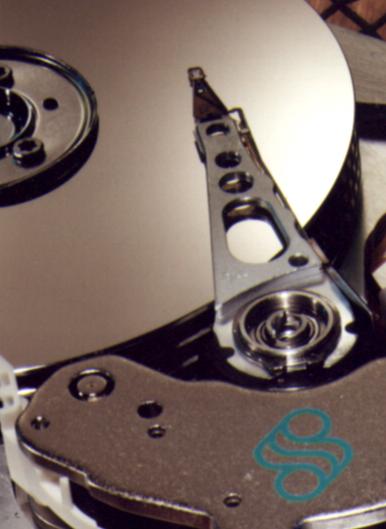
Seagate Medalist 17240 Family
Seagate have long had two or three levels of IDE drive at any given time: entry-level, mainstream, and high-performance. They always have an entry-level drive, nearly always a mainstream mid-market product, and seem to produce high-end, high-performance drives or not produce them as the mood takes them. When they do make a high-performance drive, it is usually an absolute ripper.
They announced the Medalist 17240 in November 1998 as a replacement for both the mainstream Medalist 5400's and the high-performance Medalist 7200's. Frankly, they didn't have a Medalist 7200 replacement and this was fluff: PR spin notwithstanding, the 17240 was a mainstream product, nothing more. At 5400 RPM and 9.0ms, no-one who knew anything about hard drives was fooled for a moment.
On paper they looked great: straight out of the classic Seagate mainstream mould. The performance figures were more than competitive with the then-current 5400 RPM market-leading drives (Quantum's Fireball EX and CR models): the data transfer rate was almost identical, they lifted the previous Medalist's meager 128k on-drive cache to 512k, and the seek time was down significantly: from 10.5ms to 9.0.
Alas, the delivery was sadly lacking. There was nothing wrong with the drives themselves, Seagate just took far too long getting them into volume production, and by the time they arrived they were merely competent performers, no longer leading-edge.
Pre-announcing a drive six months before you have product ready to ship is considered dirty pool. In the case of IBM and Quantum, this is routine practice — they are notorious for it — but Seagate are usually much better behaved, at least with IDE drives. With the 17240, we presume that they ran into major production difficulties: they had already dropped the previous models and had everything to gain and nothing to loose by getting the 17240 out on time. In fact, they lost considerable market share to their competitors — here at Red Hill we sold a lot of IBM and Western Digital drives instead, and were encouraged to have one of our rare flirtations with Quantum.
Score this round of the eternal Seagate-Quantum battle to Quantum.
| Performance | 1.19 | Reliability | no data |
| Data rate | 188 Mbit/sec | Spin rate | 5400 RPM |
| Seek time | 9.0ms | Buffer | 512k |
| Platter capacity | 4.3GB | Interface | ATA-33/66 |
| ST-34310A | 4.3GB | 2 MR heads | |
| ST-38420A | 8.4GB | 4 MR heads | ** |
| ST-310231A | 10.2GB | 5 MR heads | |
| ST-313032A | 12.9GB | 6 MR heads | * |
| ST-17242A | 17.2GB | 8 MR heads | * |
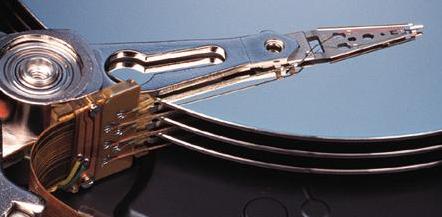
1999 Drive of the Year
Western Digital Expert / IBM Deskstar 22GXP
For most of the year, these were simply the fastest things available in IDE.
Seagate had been the first with a 7200 RPM drive; they were quickly followed by IBM and, surprisingly, Maxtor — but none of the early 7200s gave the quantum performance leap that these did. They were the first second-generation 7200 RPM drive, easily faster than any of the previous three, and the Expert was the drive to have in '99.
More correctly, we should say the Expert or the IBM Deskstar 22GXP: the two drives were identical in all but name. WD had started using IBM (rather than their previous suppliers) for component supply and design, and the Expert was essentially an IBM Deskstar 22GXP manufactured under license. In practice, the Expert and the 22GXP were interchangeable. Badging aside, it's almost impossible to tell them apart; only under close inspection can very small differences on the circuit board be seen. Here at Red Hill we didn't distinguish between them; we usually carried one or other in stock, but it mattered not at all which of the two.
The Expert/GXP twins were phenomenally fast, easily the fastest IDE drives available until the Quantum Fireball Plus arrived, and even then the performance difference between a Fireball Plus, a 22GXP, and an Expert was very small. Any one of the three was (and still is) an excellent choice. Best of all, for the winter of 1999 the battle for the high-performance IDE market was a three-way split: Maxtor were off the pace and traditional market leader Seagate had abandoned it for the time being, so Quantum, Western Digital and IBM had to fight it out on price. This was great news for buyers with a taste for performance.
| Performance | 1.30 | Reliability | AA1 |
| Data rate | 224.3 Mbit/sec | Spin rate | 7200 RPM |
| Seek time | 9.0ms | Buffer | 2MB |
| Platter capacity | 4.55GB | Interface | ATA-66 |
| AC29100 | 9.1GB | 4 GMR heads | ** |
| AC313500 | 13.5GB | 6 MR heads | * |
| AC418000 | 18.0GB | 8 MR heads | ** |
| DJNA-371800 | 18.0GB | 4 MR heads | * |
| DJNA-372200 | 22.0GB | 6 MR heads |
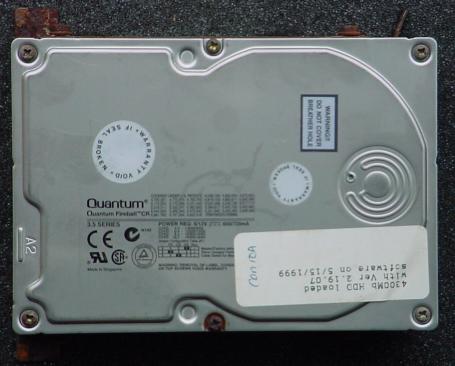
Quantum Fireball CR
An incremental upgrade to Quantum's previous Fireball EX. The main difference was the Ultra ATA-66 interface support. Although the platter capacity was up again, performance was almost identical to the older drives.
← An unexceptional 4.3GB drive, as typical of the entry level in 1999 as any other? Look at the close-up of the underside of this Fireball CR drive down the page a little and think again.
However, unlike the EX series, the Fireball CRs came in a more orthodox set of sizes. On the whole, this was an advantage as the odd-ball sizes of the old EX made it difficult to fit into a model range. PC manufacturers generally prefer to have at least one close alternative model available so they can cover supply shortages and have more bargaining power.
(In fact, the only two unusual size drives we've sold in any numbers at Red Hill in the last few years have been the 3.6GB IBM Deskstar 4 and this 5.1GB Western Digital. Both had stop-start sales careers, selling like crazy when they were the same price as the next orthodox size down (because no-one can resist a bargain), but hardly moving at all when they were priced any higher. (Because if you are going to pay a little extra for a bigger drive, why not go for the next full size up?)
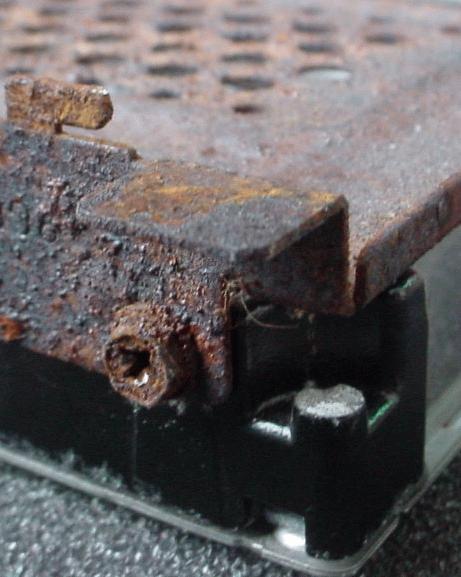
The underside of the same drive illustrated above. An extraordinary drive this one! This came out of a poor-quality mass-market machine belonging to a mining company. It came to us in late 2001. Our brief: do whatever we judged best, spend whatever it took, just so long as we returned them a reliable machine complete with the existing software installation and the specialised data-logging card it had installed in it.
In over twenty years of working with computers, we have never seen a working machine in such condition: as you can see from the picture, the acid atmosphere in the mine is viciously corrosive. The back of the computer chassis was almost entirely rusted away. There was no hope of removing the screws, so to get the drive out we had to use a hack saw to cut away the mounting frame.
Astonishingly enough, the Fireball still worked perfectly, and we were able to transfer the data to a new drive without the slightest difficulty. Indeed, the CR is still working today, doing duty as a boot drive in our benchmarking system.
| Performance | 1.17 | Reliability | no data |
| Data rate | 190 Mbit/sec | Spin rate | 5400 RPM |
| Seek time | 9.5ms | Buffer | 512k |
| Platter capacity | 4.3GB | Interface | ATA-66 |
| CR 4.3 | 4.3GB | 2 MR heads | |
| CR 6.4 | 6.4GB | 3 MR heads | * |
| CR 8.4 | 8.4GB | 4 MR heads | |
| CR 12.7 | 12.7GB | 6 MR heads |
Seagate U4 Family
An odd looking drive, because it was covered in Seagate's black rubber anti-shock shield. (Actually some sort of plastic, we presume, but you get the idea.) It is quite soft and mobile, and feels even stranger than it looks at first, but you get used to it after a while. Trade customers occasionally refer to the U series drives as "those Seagate things with the textured condom on them".
In another move to reduce handling damage, they came packaged in Seagate's new clear plastic clamshells, instead of the traditional anti-static bag. This was an excellent idea. It makes the drive considerably more robust with no loss of convenience and has become standard with all Seagate drives. More recently, Samsung have followed suit with a similar thing.
These were the first of a long, long line of U Series drives from Seagate, which continue in production to this day, and have been very successful for them, although not always good for computer buyers because, despite their decent specification, mechanical robustness and reasonable pricing, many of the U Series drives have been less than stellar performers. Indeed, the U Series drive today is looked down on by computer enthusiasts the way that the Quantum Bigfoot used to be in the second half of the 1990s. This is both only fair, and not quite fair, as some of the U Series drives have been quite decent performers given their price, while others have been very sluggish indeed. Which ones are which? Read on.
This first of all the U Series drives, the U4, was introduced with remarkably little fanfare. Seagate snuck them onto the desktop market almost by stealth. In theory, they were targeted at home entertainment systems more than computers. But, as is the way with these things, the U Series Seagates moved quietly into the mainstream desktop market. They were very much a drive in the tradition of the Medalist 4500s: unfashionable, cheap, as reliable as sunrise, and rather sluggish. On the whole, we didn't like them all that much, simply because of the noticeable speed difference between a U4 and the drives it competed with for our buying dollars: mainly the Western Digital 6.4 and the outgoing Seagate ST36422.
Nevertheless, we ended up using a reasonable number of them for a time, mostly the 6.4GB version, as the old 36422 went out of production and the Western Digital suffered from alternating bouts of stock shortage and too-high pricing. In the end, we found ourselves neglecting the U 4 in favour of the Samsung Spinpoint 6.4, which was equally well-priced and noticeably faster.
| Performance | 1.15 | Reliability | AA2 |
| Data rate | 206 Mbit/sec | Spin rate | 5400 RPM |
| Claimed seek | 10.5ms | Buffer | 256k |
| Platter capacity | 4.3GB | Interface | ATA-66 |
| ST-34311A | 4.3GB | 2 GMR heads | |
| ST-36421A | 6.4GB | 3 GMR heads | ** |
| ST-38421A | 8.4GB | 4 GMR heads |
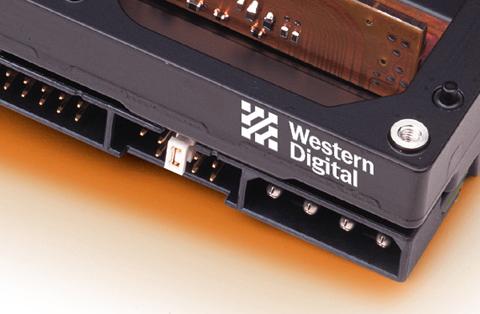
IBM Deskstar 25GP & Western Digital Caviar GMR
At 3.74 billion bits per square inch, these 20GB and 25GB drives set yet another areal density world record for IBM. This, in turn, pushed 5400 RPM data transfer rates up to equal that of 1998's 7200 RPM drives — in fact, 195Mbit/sec is faster than a Series 1 Cheetah. (Of course, this is to ignore the lower access time, lower latency, and SCSI multi-tasking advantages of 10,000 RPM Cheetah-class drives; just the same, the Deskstar 25GP was impressive.)
Generally, IBM's ground-breaking leading edge drives are made in small quantities and are quite expensive. It is their still high-tech but bargain priced second generation drives that usually sell in big numbers. In other words, in the real world you were more likely to see the older Deskstar 16XP than these.
As usual with the WD/IBM combination drives, the Western Digital range had the same drives in different capacities. At least for us here at Red Hill, it was the smallest WD drive that was the only volume mover. 20GB was a huge drive at the time and fairly expensive. It made more sense, if you were going for something that big, to go the whole hog and get something in 7200 RPM (like an 18GB Expert). Conversely, if cost was more important than performance, then you were best advised to look at a 17GB Seagate U8 or (a little later on) a 20GB Samsung.
| Performance | 1.20 | Reliability | AAX |
| Data rate | 195.6 Mbit/sec | Spin rate | 5400 RPM |
| Seek time | 9.0ms | Buffer | 512k |
| Platter capacity | 5.0GB | Interface | ATA-66 |
| AC210400 | 10.4GB | 4 MR heads | ** |
| AC315300 | 15.3GB | 6 MR heads | |
| AC420400 | 20.4GB | 8 MR heads | |
| DJNA-352030 | 20.4GB | 6 MR heads | |
| DJNA-352500 | 25.6GB | 8 MR heads |
Quantum Fireball Plus KA
Oddly enough, Quantum were the last of the major makers to produce a 7200 RPM IDE drive. Though they took their time about going to 7200 RPM, when these finally arrived in mid-99 they proved to be worth the wait: by a narrow margin from the Expert/GXP twins, these were the new IDE performance champion. In the market, they had a good deal of success, though here at Red Hill we stuck with the Experts for another month or so until the Barracuda ATA took over.
(Surely Quantum's marketing department could have thought of a better name than "Fireball Plus" though — Quantum used to be pretty good at this sort of thing once.)
| Performance | 1.33 | Reliability | no data |
| Data rate | 235 Mbit/sec | Spin rate | 7200 RPM |
| Seek time | 8.5ms | Buffer | 512k |
| Platter capacity | 4.7GB | Interface | ATA-66 |
| KA 6.1 | 6.1GB | 3 MR heads | |
| KA 9.4 | 9.4GB | 4 MR heads | |
| KA 13.2 | 13.2GB | 6 MR heads | |
| KA 18.2 | 18.2GB | 8 MR heads |
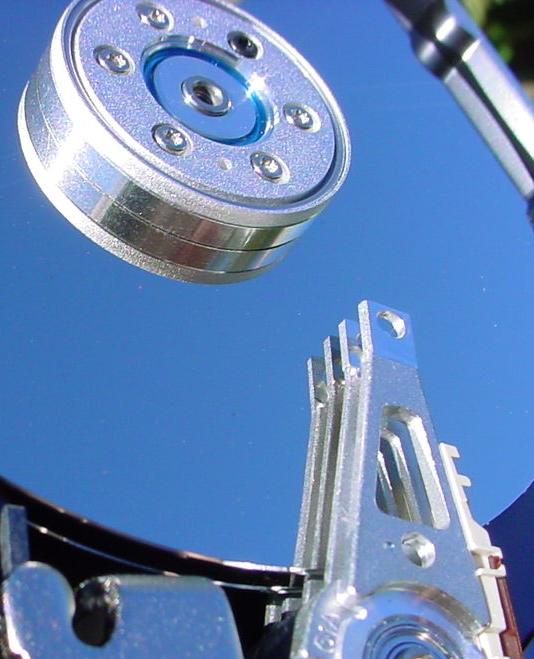
Quantum Fireball CX
Quantum's first GMR head drive had very impressive specs: it was the fastest 5400 RPM drive around for quite some time. Indeed, at 241Mbit/sec, its claimed transfer rate was higher than that of any then-current 7200 RPM drive, and its overall performance about equal to that of first-generation 7200s like the Medalist 7200. They arrived in mid-year but for one reason or another, we never got around to sampling them.
→ Illustration: Fireball CX 10.2. Notice two interesting things about this two disk, three head drive: first, the low-set platter which leaves room for a third disk to be added to make the 20GB model. Second, the two naked actuator arms — there appear to be four, but the lower two are just reflections. There is nothing attached to the arms. The inner arms (not visible in the picture) have the usual read-write heads and suspension mechanisms, but the upper two arms have none. Despite the perfection of its mirror finish, the visible surface of this drive does nothing.
The 20GB CX, having six heads, simply adds three more head gimbal assemblies — two to the lower arm and one to the upper one — and an extra platter. This is the only depop drive we have ever seen that has the "blank" arms included instead of a simple spacing washer. The arms themselves could only cost a few cents each, but each one adds to the mass that the voice coil has to move and must have its effect on seek times. On the other hand, there would no doubt be costs involved in recallibrating the mechanism, and in carrying extra parts for different models. Perhaps it is the modern fashion to build depop drives this way, or perhaps it is unusual: given that we are not going to start opening up good working drives at random just out of curiosity, we will have to wait until more of the recent model drives are out of warranty to find out. (Or scare up a good contact at a drive manufacturer.) This particular drive was not sold through the usual channels but direct to a major OEM, so although it was only installed in November 1999 it was already out of warranty when it failed in April 2002 and gave us the chance to photograph it.
| Performance | 1.23 | Reliability | no data |
| Data rate | 241 Mbit/sec | Spin rate | 5400 RPM |
| Seek time | 9.5ms | Buffer | 512k |
| Platter capacity | 6.8GB | Interface | ATA-66 |
| CX 6.4 | 6.4GB | 2 GMR heads | |
| CX 10.2 | 10.2GB | 3 GMR heads | |
| CX 13.0 | 13.0GB | 4 GMR heads | |
| CX 20.4 | 20.4GB | 6 GMR heads |
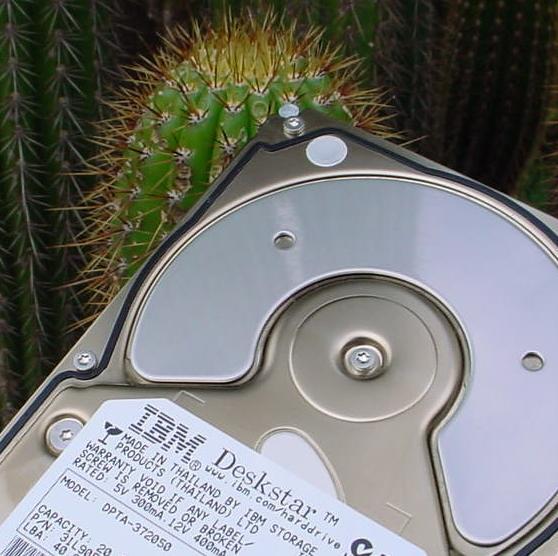
IBM Deskstar 34GXP and Western Digital Expert 2
IBM and Western Digital produced a pair of superb second generation 7200 RPM IDE drives in the Expert and the 22GXP. Their second effort (third generation) followed close behind, and repeated the dose. To our surprise, they arrived quite promptly, not after the usual inordinate IBM delay, and while not the quantum leap the Expert 1s had been, they were outstanding performers nevertheless.
Alas, their market life was dominated by stock shortages: not just of Experts and GXPs, but of all the 7200 RPM drives. From about mid-99 on, it became all but impossible to buy 7200 RPM drives in an orderly manner. Out of stocks and waiting lists were not the exception but the norm, and although all the drive manufacturers had predicted a major increase in the 7200 RPM market, none of them seemed able to satisfy it.
And when you can't be sure that you can supply a given product, it is only natural that you end up mainly recommending something else: never being confident of getting on-time shipments of the Expert IIs or 32GXPs in the second half of 1999 and the first half of 2000, we added extra RAM to our systems and sold a lot of 5400 RPM drives instead.
| Performance | 1.35 | Reliability | AAX |
| Data rate | 284 Mbit/sec | Spin rate | 7200 RPM |
| Seek time | 9.0ms | Buffer | 2MB |
| Platter capacity | 6.8GB | Interface | ATA-66 |
| AC315300 | 13.6GB | 4 GMR heads | ** |
| AC320400 | 20.4GB | 6 GMR heads | * |
| AC427200 | 27.2GB | 7 GMR heads | |
| DPTA-372050 | 20.4GB | 6 GMR heads | * |
| DPTA-373420 | 34.2GB | 8 MR heads |
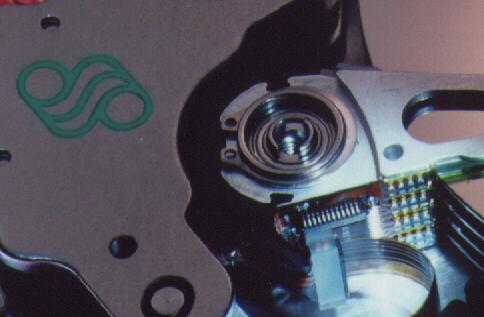
Seagate Barracuda ATA
This excellent drive was Seagate's long overdue re-entry into the high-speed IDE market that they had pioneered and then suddenly abandoned when they dropped the Medalist 7200 without warning (a huge mistake, we have always felt).
For a while there we started to wonder if Seagate were pursuing a suicidal strategy to become as a specialist entry-level IDE and high-end SCSI maker, with no product for the average mainstream system.
The Barracuda ATA was a formidable performer; for quite some time it was comfortably the fastest IDE drive available, and in typical Seagate style it could be very reasonably priced. Initially they claimed that it would sell for the same price as most 5400 RPM drives — a near-impossible task we thought, though years before they had done something similar with the wonderful old Decathlon 850 — and though the big fish never got that cheap, it was certainly very reasonable.
We expected that by winter 2000, most of our systems would ship with 7200 RPM IDE drives. In fact, this did not occur, primarily because of the consistent out-of-stocks experienced by all the drive makers, Seagate included. There was never any doubt that the 7200 RPM IDE market would keep on growing as the years rolled past, and no major manufacturer could afford to ignore it, but they all really needed to pay more attention to balancing supply and demand. (In fairness, we should note that this must be a terribly difficult task: it takes so long and costs so much to tool up a new production line for high-tech products like RAM and hard disc drives that the planners responsible for making these decisions no doubt operate toward the upper levels of the occupational stress scale.)
| Performance | 1.44 | Reliability | AAX |
| Data rate | 323 Mbit/sec | Spin rate | 7200 RPM |
| Seek time | 8.0ms | Buffer | k |
| Platter capacity | 6.8GB | Interface | ATA-66 |
| ST-320430A | 20.2GB | 6 GMR heads | ** |
| ST-328040A | 28.0GB | 8 GMR heads | * |
Seagate U8 Family
After the sluggish U4, the U8 was a pleasant surprise. On paper, it should have been only marginally faster. By comparison with the older U4, it had a less miserly 512k cache and a slightly better data rate, but the same lack-lustre factory-claimed seek time — probably the most important single figure in modern drives. In practice, however, the U8 performed admirably; it was noticeably faster than we had expected from the raw figures — indeed, it seeks a half millisecond faster than Seagate claimed — and we were happy to use the it as one of our frontline drives.
The 8.6 and 17GB versions were the volume products, and with some reason. When these drives were current in late 1999 and the first half of 2000, the 8GB U8 was one of the cheapest drives around, and amply big enough for many business and non-games home users, so it sold well. The 13GB U8 was only twenty or thirty dollars more and substantially bigger, but then the 17 was bigger again and still not expensive, so most buyers went with one priority or the other: the best price for a decent size (the 8.4GB) or the biggest size at a decent price (the 17GB), while the in-between model (13GB) sold quite slowly.
Like the U4, these came in Seagate's distinctive rubberised anti-shock packaging. It does nothing for their looks, but is an excellent innovation from the point of view of preventing handling damage — easily the most common cause of hard drive failure. These became a firm favourite here: cheap, very reliable, and quite capable of holding their own in the performance department, at least until the superb Samsung SpinPoint V1020 arrived a little later on. Their longer-term performance has not been so good though, we continue to get a slow but steady trickle of failed U8s returning faulty.
| Performance | 1.24 | Reliability | AA2 |
| Data rate | 285.5Mbit/sec | Spin rate | 5400 RPM |
| Seek time | 10.0ms | Buffer | 512k |
| Platter capacity | 8.6GB | Interface | ATA-66 |
| ST-38410A | 8.62GB | 2 MR heads | *** |
| ST-313021A | 13.02GB | 3 MR heads | * |
| ST-317221A | 17.25GB | 5 MR heads | **** |
Samsung SpinPoint V6800 Family
Another quiet achiever from Samsung, with nothing much bar keen pricing to distinguish it from the crowd. This, of course, is a virtue in anything other than an out and out high-performance drive. Indeed, the more Samsungs we used, the more they reminded us of the best entry-level Seagate Medalists of old: plenty fast enough, surprisingly cheap, and ultra reliable. In our book, that made them an almost perfect drive.
| Performance | 1.23 | Reliability | AAA |
| Data rate | 247 Mbit/sec | Spin rate | 5400 RPM |
| Seek time | 9.5ms | Buffer | 512k |
| Platter capacity | 6.8GB | Interface | ATA-66 |
| SV0682D | 6.8GB | 2 MR heads | * |
| SV1023D | 10.2GB | 3 MR heads | |
| SV1364D | 13.6GB | 4 MR heads | |
| SV1705D | 17.0GB | 5 MR heads | |
| SV2046D | 20.4GB | 6 MR heads | *** |
Western Digital 136BA
After an on-again off-again component and design relationship with IBM, Western Digital started doing their own design work once more. Their confusing new naming scheme dubbed all their IDE drives "Caviar" (just as they used to be), and the 7200 RPM units like this one are distinguished by the "B" in the model number. (The "AA" drives are the 5400 RPM models.) We'd have liked these a lot more if we had been able to get them regularly. At one stage we waited several months for stock (by which time, customers with outstanding orders had long since given up and bought something else, of course). When you could get these drives though, they were excellent.
| Performance | 1.37 | Reliability | no data |
| Data rate | 304 Mbit/sec | Spin rate | 7200 RPM |
| Seek time | 8.9ms | Buffer | 2MB |
| Platter capacity | 9.1GB | Interface | ATA-66 |
| WD136BA | 13.67GB | 3 GMR heads | * |


